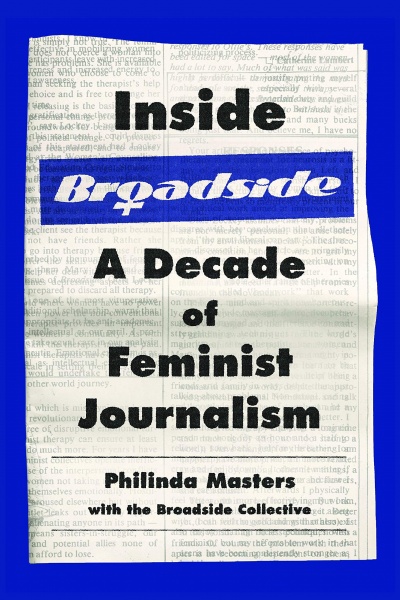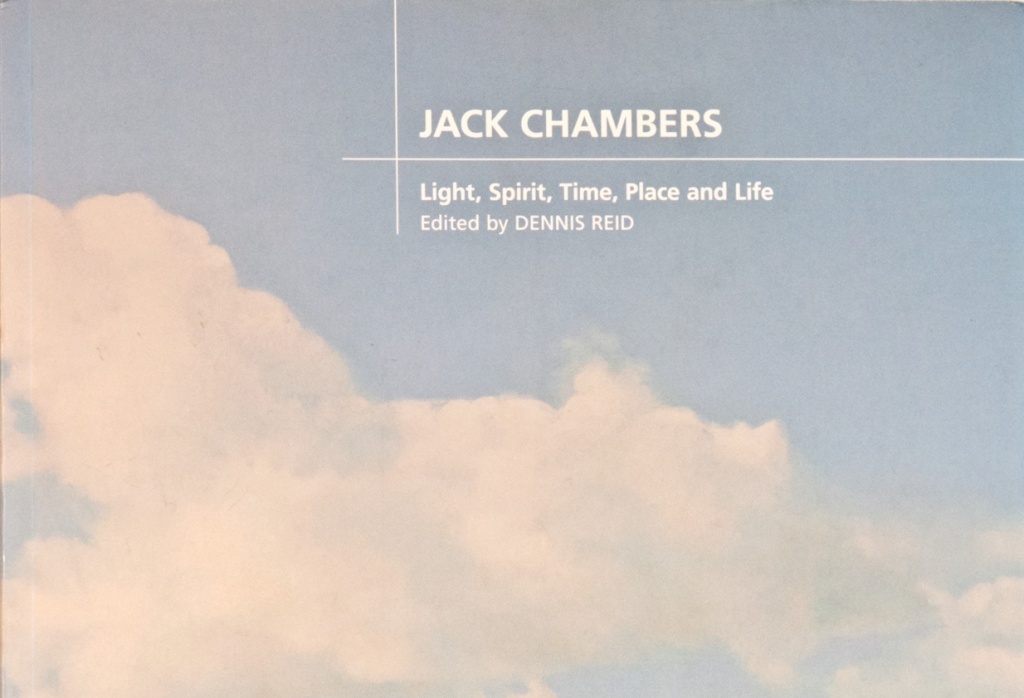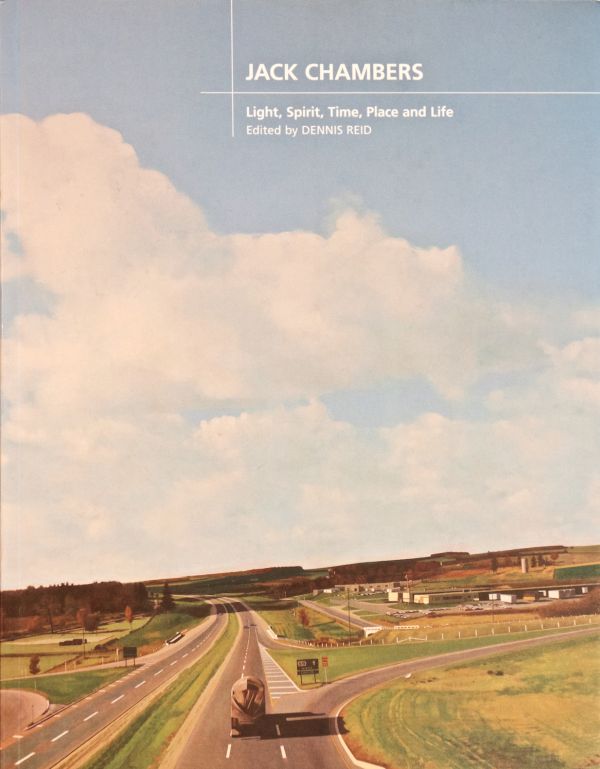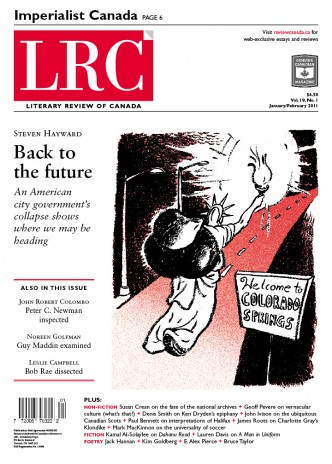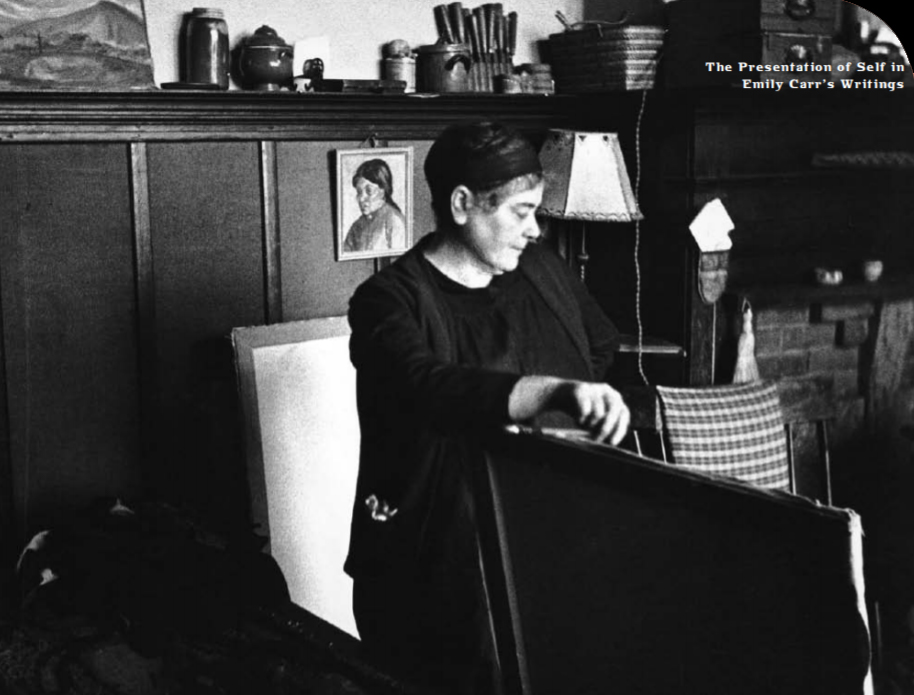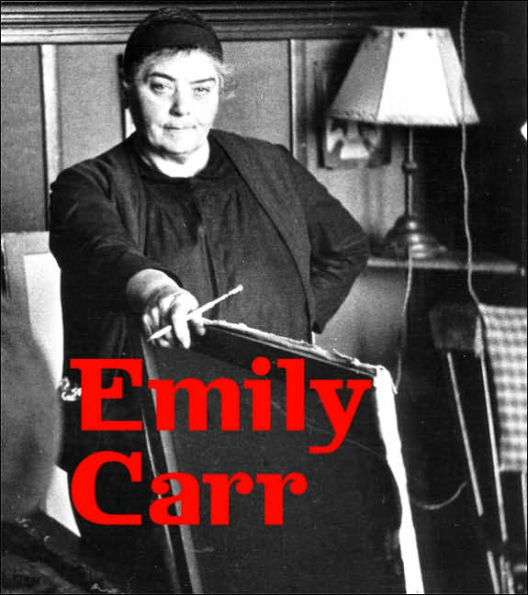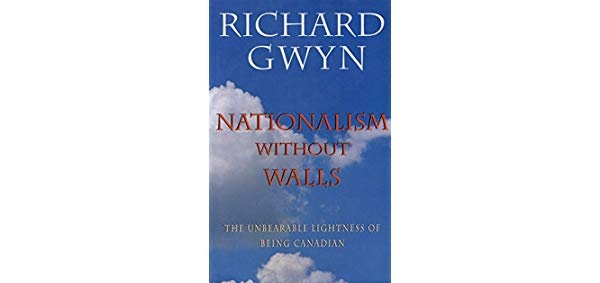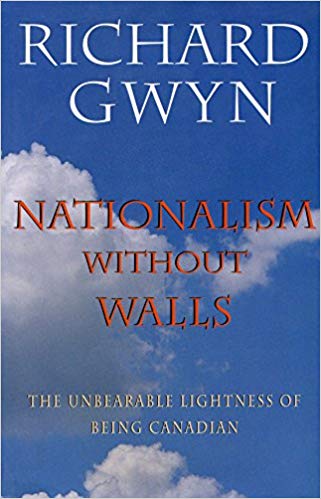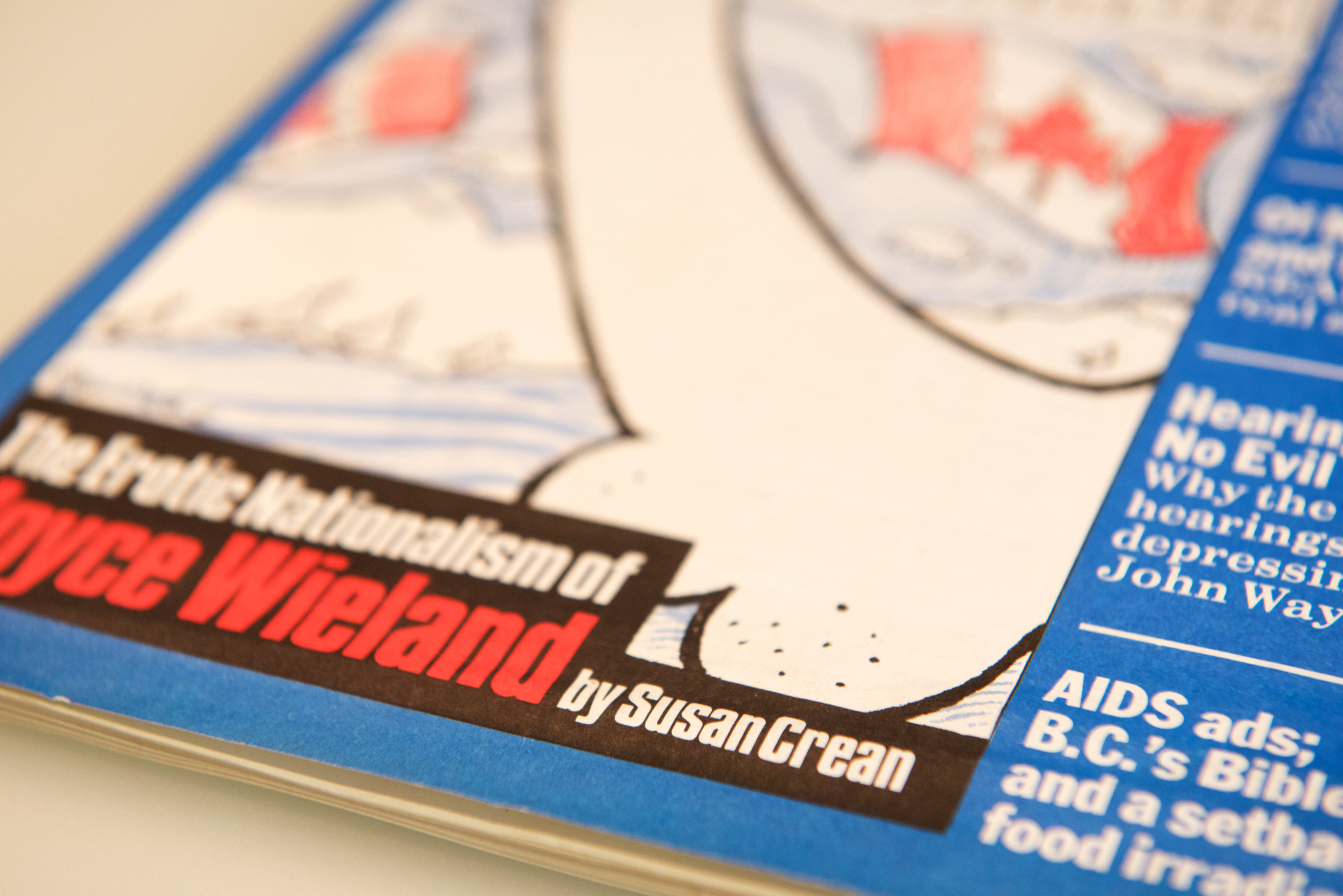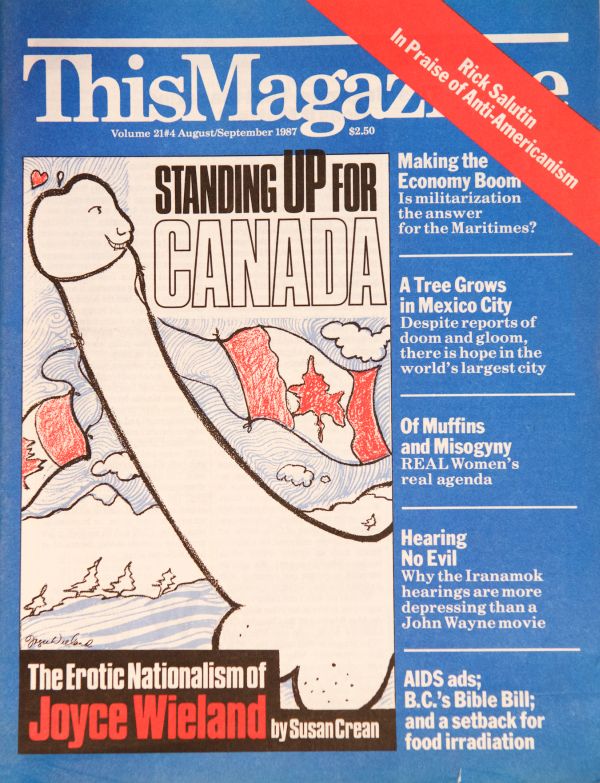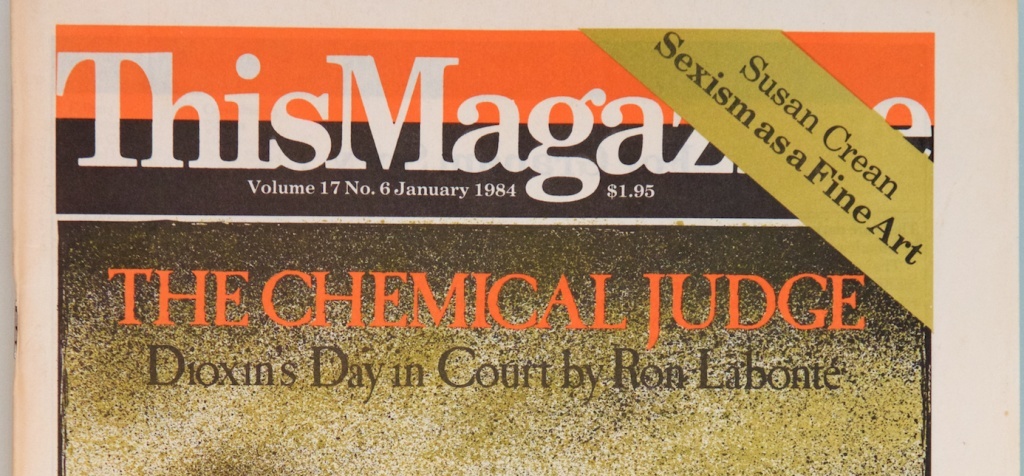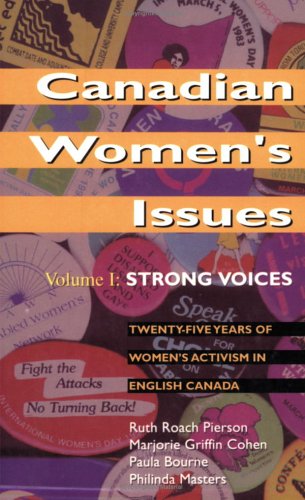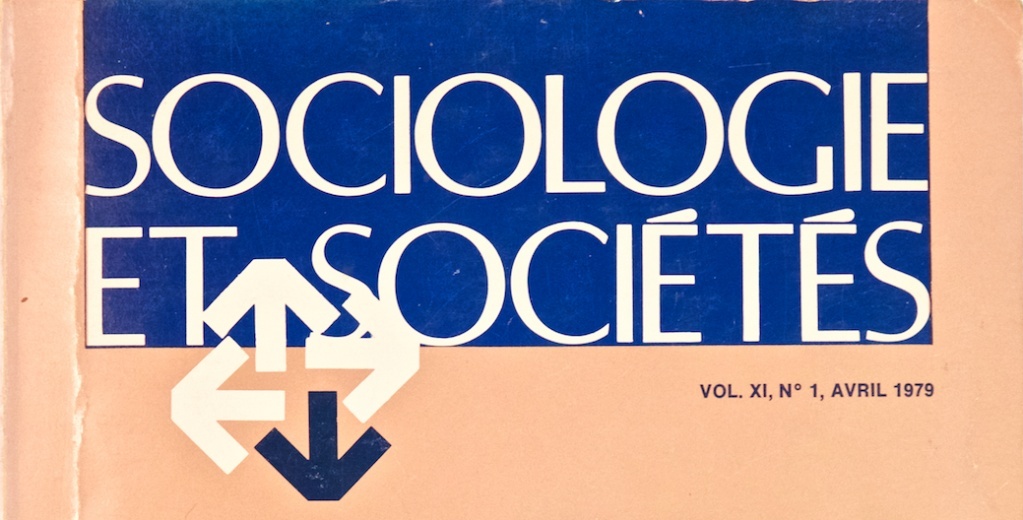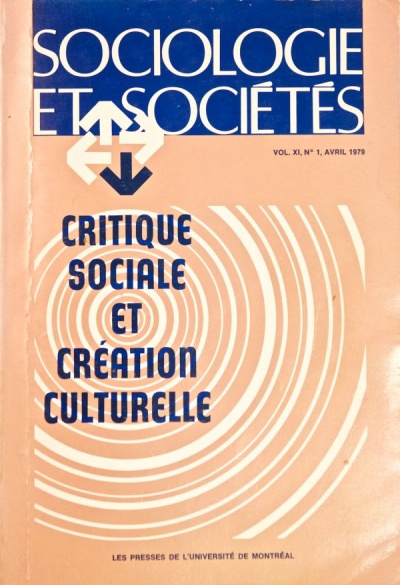In Inside Broadside: A Decade of Feminist Journalism. Ed, Philinda Masters, Second Story Press Oct. 8 2019.
"The point is not to criticize Chicago for her choice of guests; nor for attempting to take in all of western civilization in her sweep of history.... The point is, however, that Chicago's politics are not particularly radical. Her visualization of feminism, rhetoric aside, fits right in with the trendy notions of 'liberated' upper class matrons."
Broadside: A Feminist Review was a groundbreaking Canadian feminist newspaper published between 1979 and 1989. While Broadside paid attention to everything from feminists making art to street activism, it also covered the mainstream, from pop culture to peacemaking. The Broadside team uncovered the work of female artists and developed challenging and risky new ideas, all while participating in the day-to-day organizing of a grassroots movement.
Broadside helped reinvent journalism to make room for a feminist voice. This collection looks at the impact of the newspaper on the lives of women. Through a selection of key articles, the book explores the issues and events, the conflicts and controversies, and the debates and discoveries of feminist theory and activism that formed the context and content of a decade of change.
Buy the book here.

